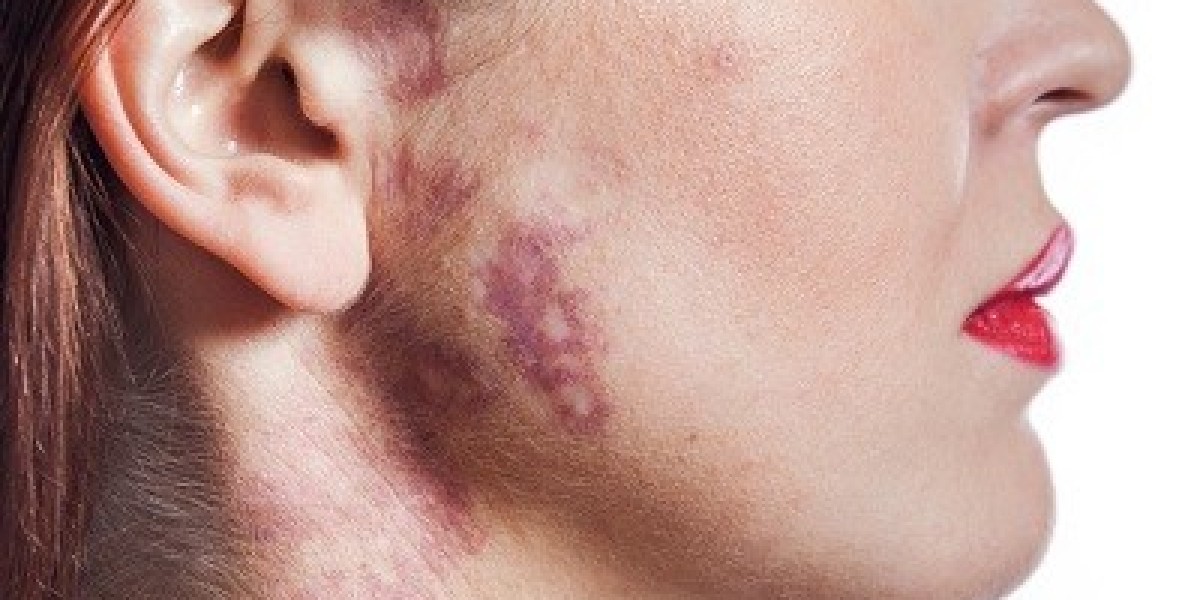Birthmarks are common skin features that appear in a variety of forms, from flat and pigmented to raised and vascular. Many people have birthmarks, and a common question is whether they typically disappear or change over time. This blog explores how birthmarks evolve and whether they usually fade or disappear, depending on their type and characteristics.
Types of Birthmarks and Their Likelihood of Disappearing:
Vascular Birthmarks:
Hemangiomas: These are bright red, raised birthmarks caused by an abnormal growth of blood vessels. Hemangiomas are known for their initial rapid growth during infancy. However, they often go through a process called involution, where they gradually shrink and fade over time. Most hemangiomas start to shrink around 12-18 months of age and are significantly reduced or completely gone by the age of 5 to 10 years. Though they usually fade, some may leave residual marks or changes in skin texture.
Port-Wine Stains: These are flat, pink to dark red marks caused by dilated blood vessels. Unlike hemangiomas, port-wine stains do not typically fade or disappear on their own. They tend to persist throughout a person’s life and may darken or become more pronounced with age. While they are permanent, treatments like laser therapy can significantly reduce their appearance.
Pigmented Birthmarks:
Congenital Melanocytic Nevi: These are moles present at birth, varying in size and color. Congenital melanocytic nevi generally do not disappear on their own. They may change slightly in size or color as a person grows, especially during puberty. Larger nevi may require monitoring for potential changes and could be removed if necessary, but they are unlikely to vanish without intervention.
Café-au-Lait Spots: These are light brown marks that may appear at birth or develop shortly after. Café-au-lait spots can sometimes lighten or fade slightly over time, but they rarely disappear completely. The number of spots may increase, especially in childhood. If multiple spots appear, it’s important to consult with a healthcare provider to rule out associated conditions like neurofibromatosis.
Mongolian Spots: These are blue-gray patches usually found on the lower back and buttocks of infants, particularly those with darker skin. Mongolian spots typically fade significantly or completely disappear by the age of 2 to 4 years. They are most common in newborns and generally do not require treatment.
Factors Influencing Whether Birthmarks Disappear:
Type of Birthmark: The likelihood of a birthmark disappearing depends largely on its type. Vascular birthmarks like hemangiomas have a higher chance of fading or disappearing, while pigmented birthmarks such as port-wine stains and congenital melanocytic nevi are more likely to persist.
Age: Some birthmarks may change with age. For instance, hemangiomas often shrink as a child grows, while port-wine stains and café-au-lait spots typically remain stable or change very slowly over time.
Hormonal Changes: Hormonal changes during puberty, pregnancy, or aging can affect the appearance of pigmented birthmarks. Some moles may become darker or larger during these periods.
Sun Exposure: Exposure to the sun can affect pigmented birthmarks, potentially darkening them. Protecting the skin with sunscreen and avoiding excessive sun exposure can help manage changes in pigmentation.
Medical Conditions: Certain medical conditions can influence the appearance of birthmarks. For example, neurofibromatosis can lead to the development of additional café-au-lait spots. If a birthmark changes suddenly or unusually, it’s important to seek medical advice to rule out underlying issues.
When to Seek Medical Advice:
While many birthmarks are harmless and do not require treatment, there are situations where medical evaluation is necessary:
Changes in Appearance: If a birthmark changes in size, shape, color, or texture, or if it becomes painful or bleeds, it should be examined by a dermatologist. These changes can sometimes indicate underlying health issues that need attention.
New Symptoms: New symptoms such as itching, swelling, or ulceration should be assessed to ensure that there is no underlying condition affecting the birthmark.
Cosmetic Concerns: If a birthmark affects your self-esteem or quality of life, discuss your concerns with a healthcare provider. They can offer advice on potential treatments or cosmetic options if desired.
Conclusion:
The likelihood of a birthmark disappearing depends on its type and characteristics. Vascular birthmarks like hemangiomas often shrink and fade over time, while pigmented birthmarks such as port-wine stains and congenital melanocytic nevi are less likely to disappear without intervention. Factors like age, hormonal changes, sun exposure, and underlying medical conditions can all influence the appearance of birthmarks.
For more information visit Enfield royal clinic in Islamabad.








